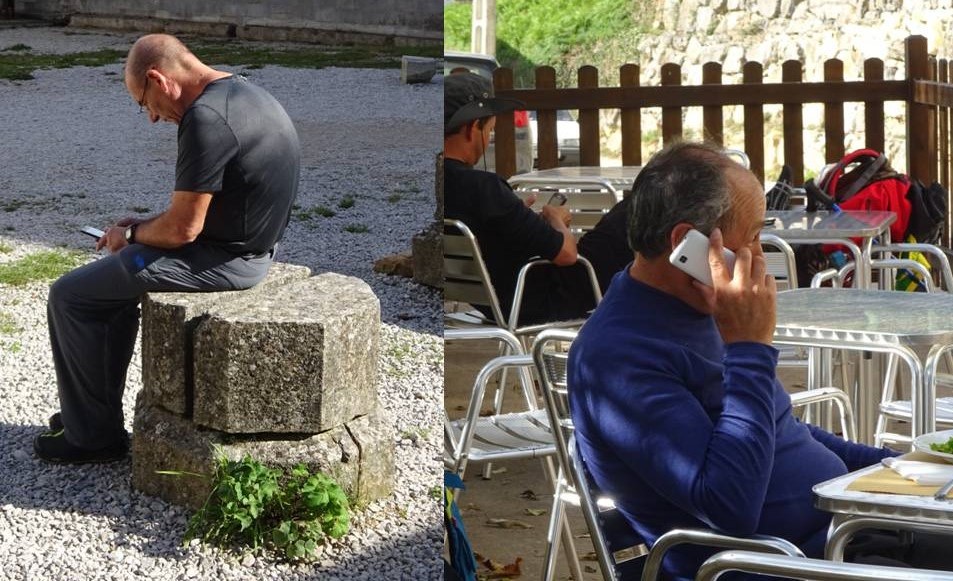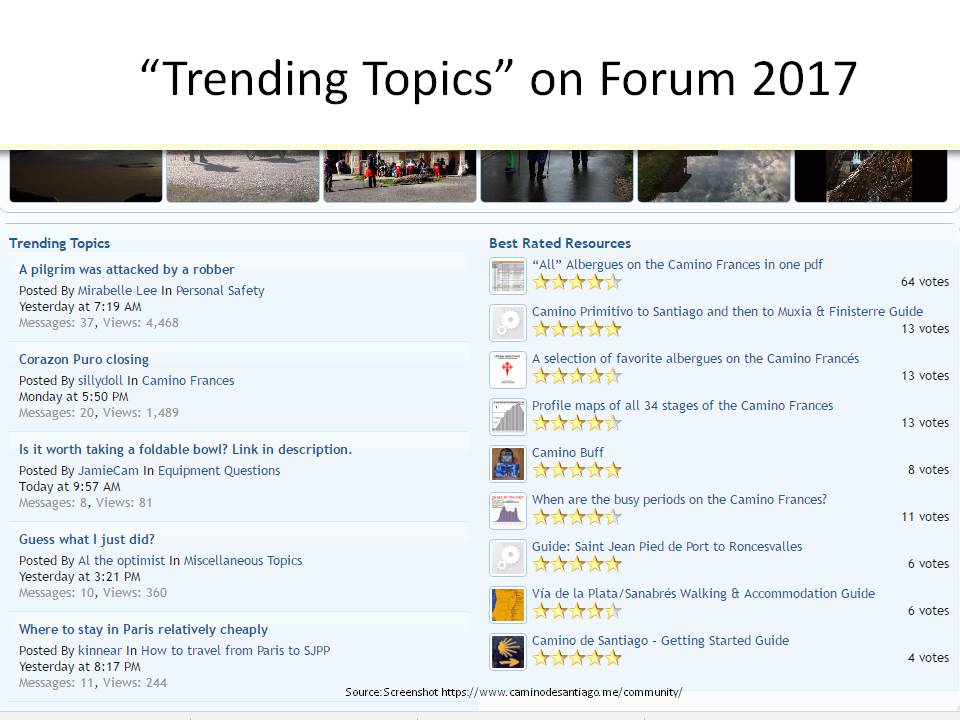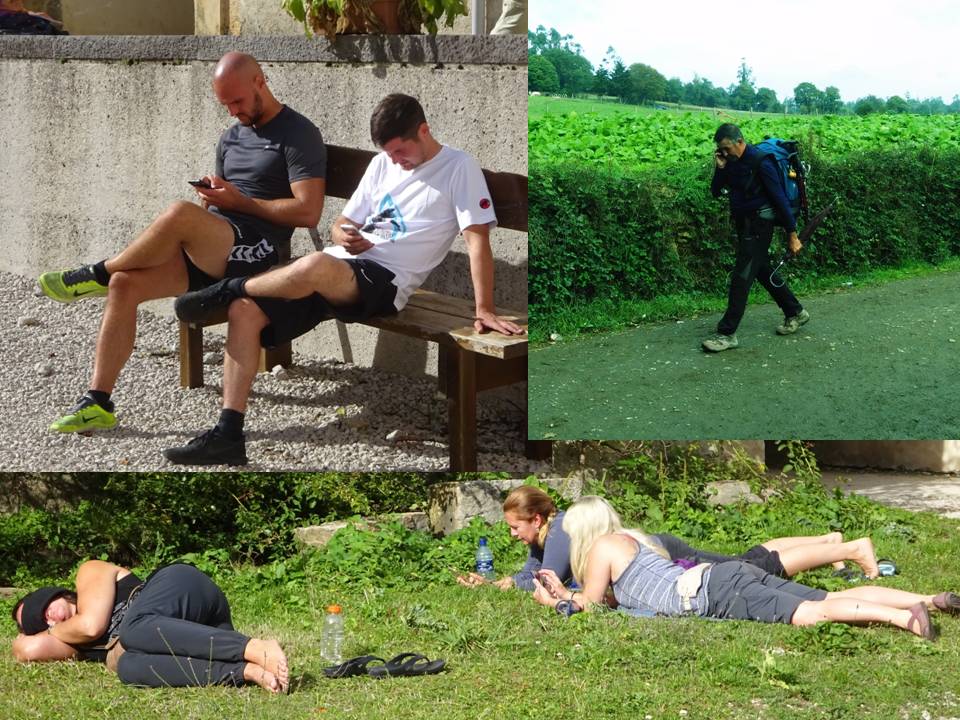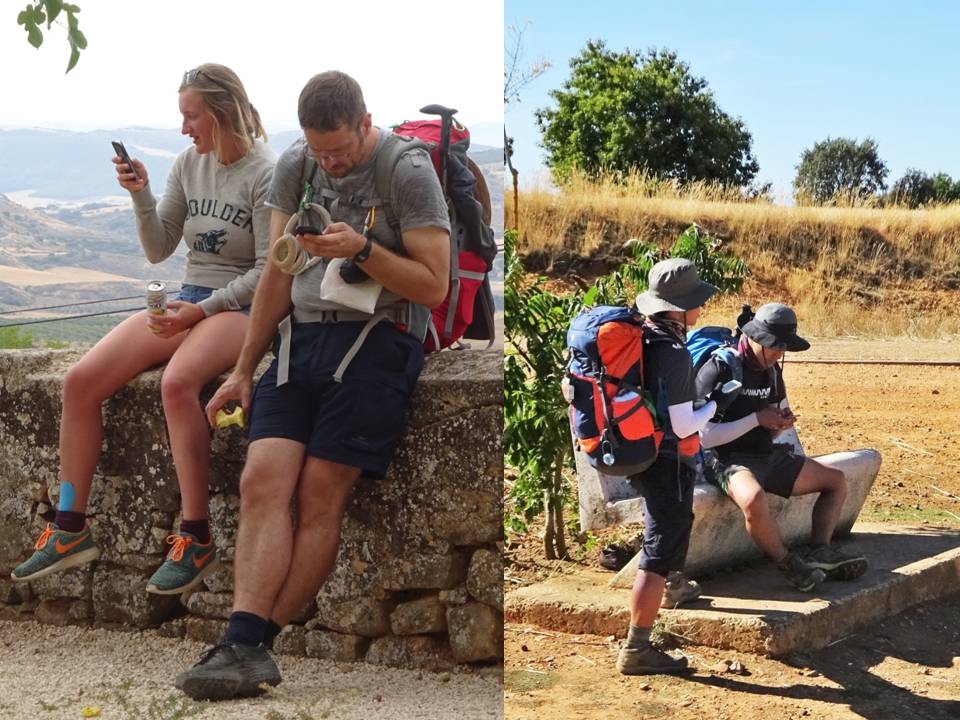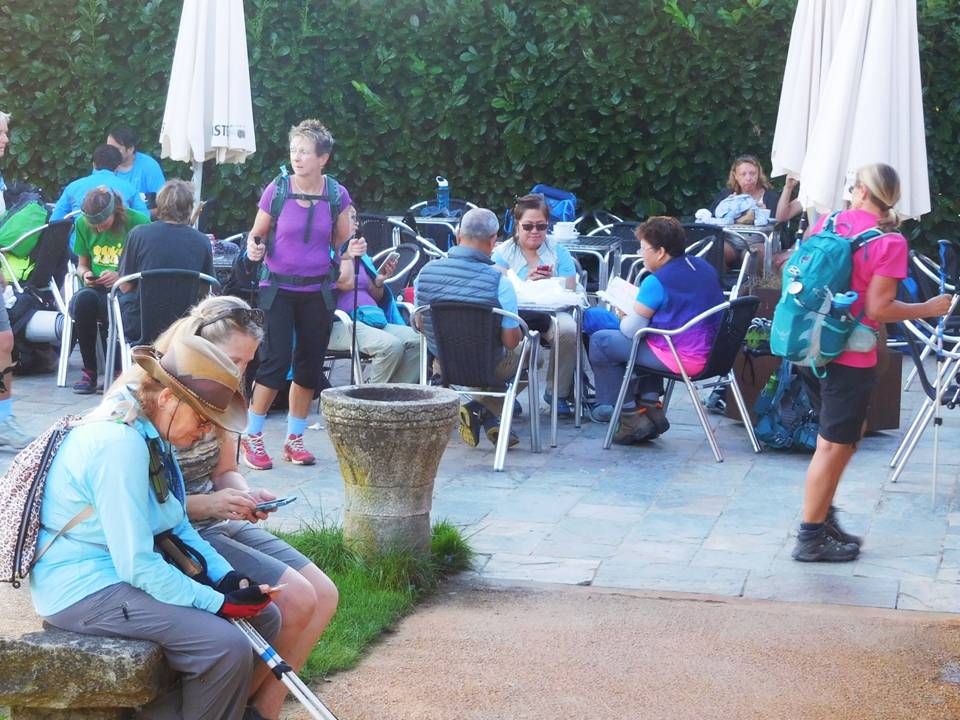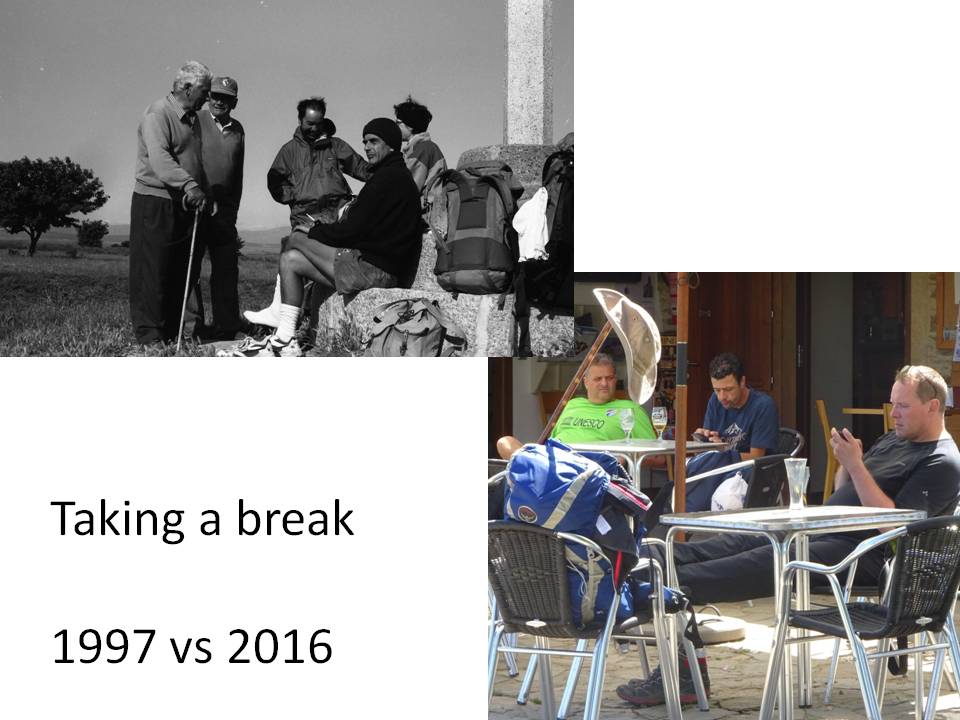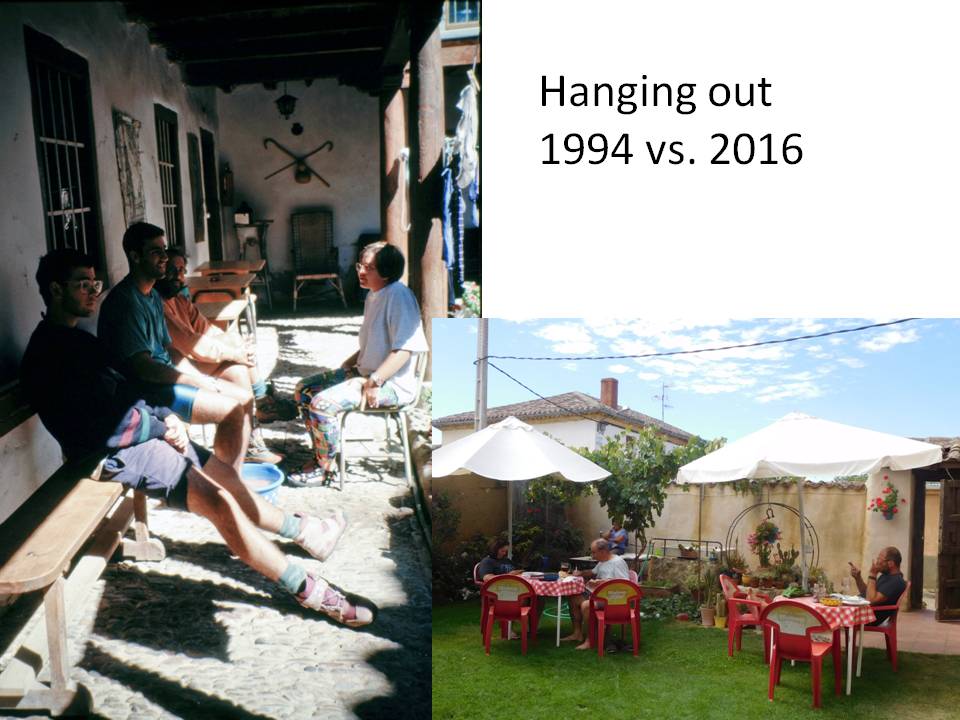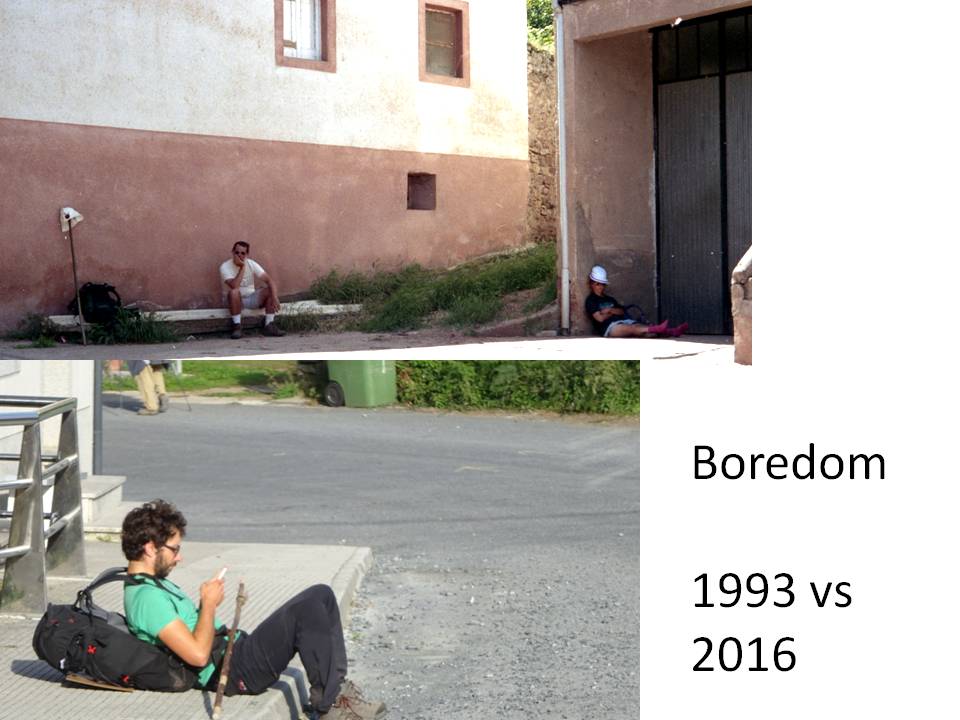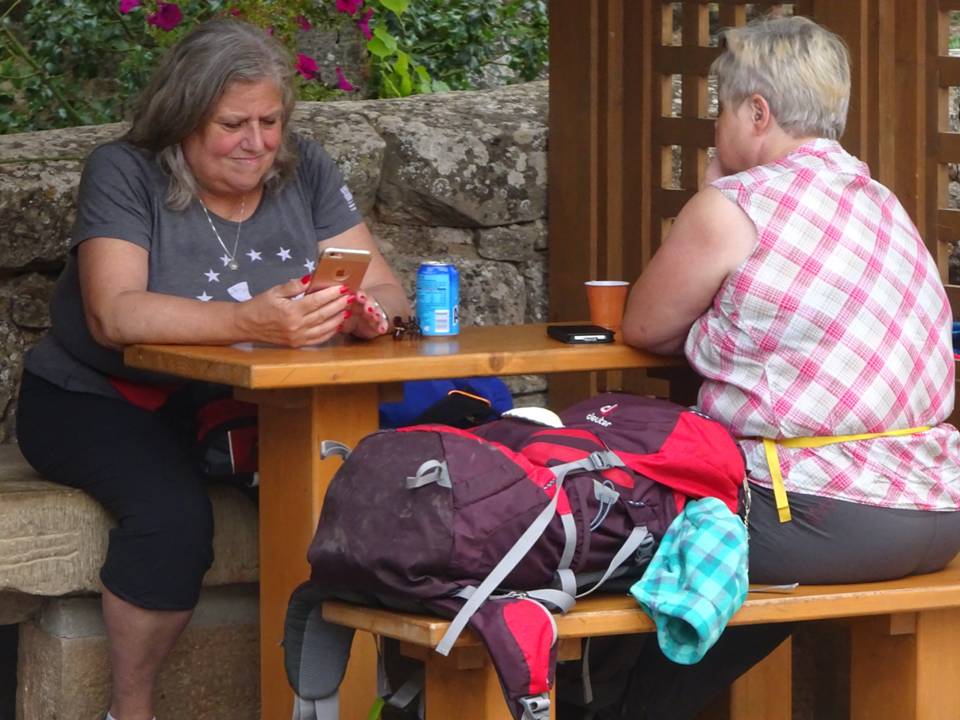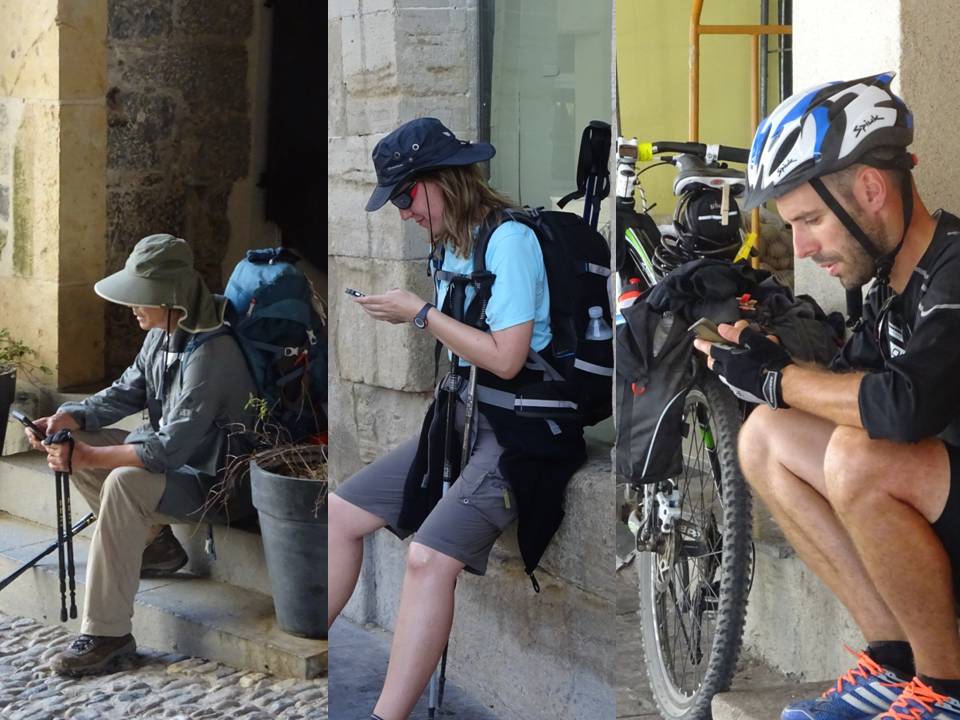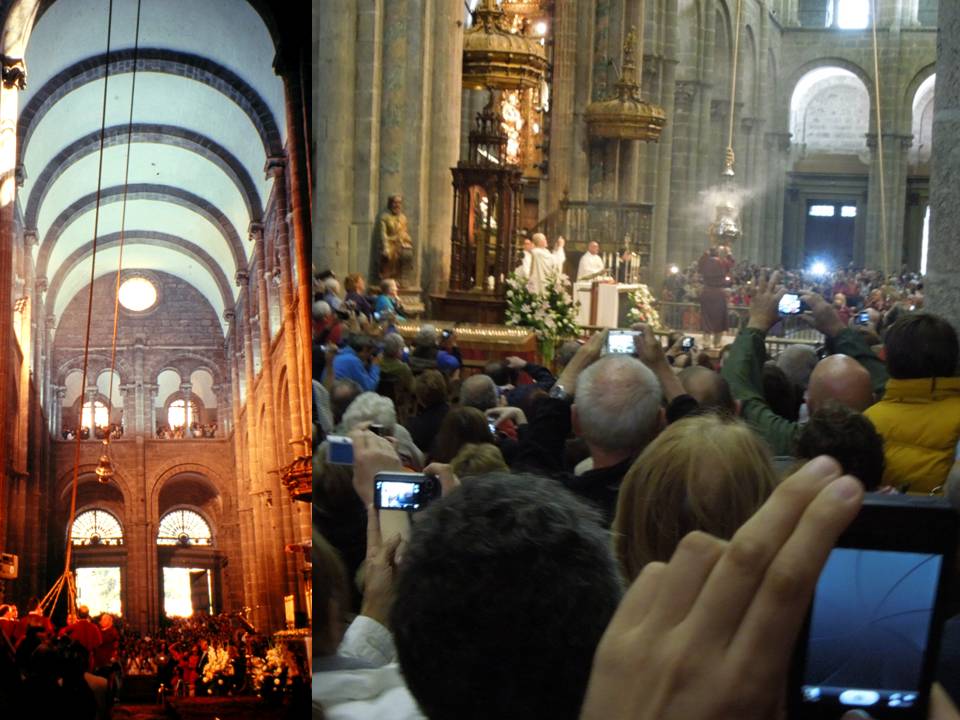15 Tips for Keeping Your Head Out of the Cloud
15 Tips for Keeping your Head out of the Cloud:
Pilgrimage in Body AND Mind
By Nancy L. Frey, PhD
23 March 2018
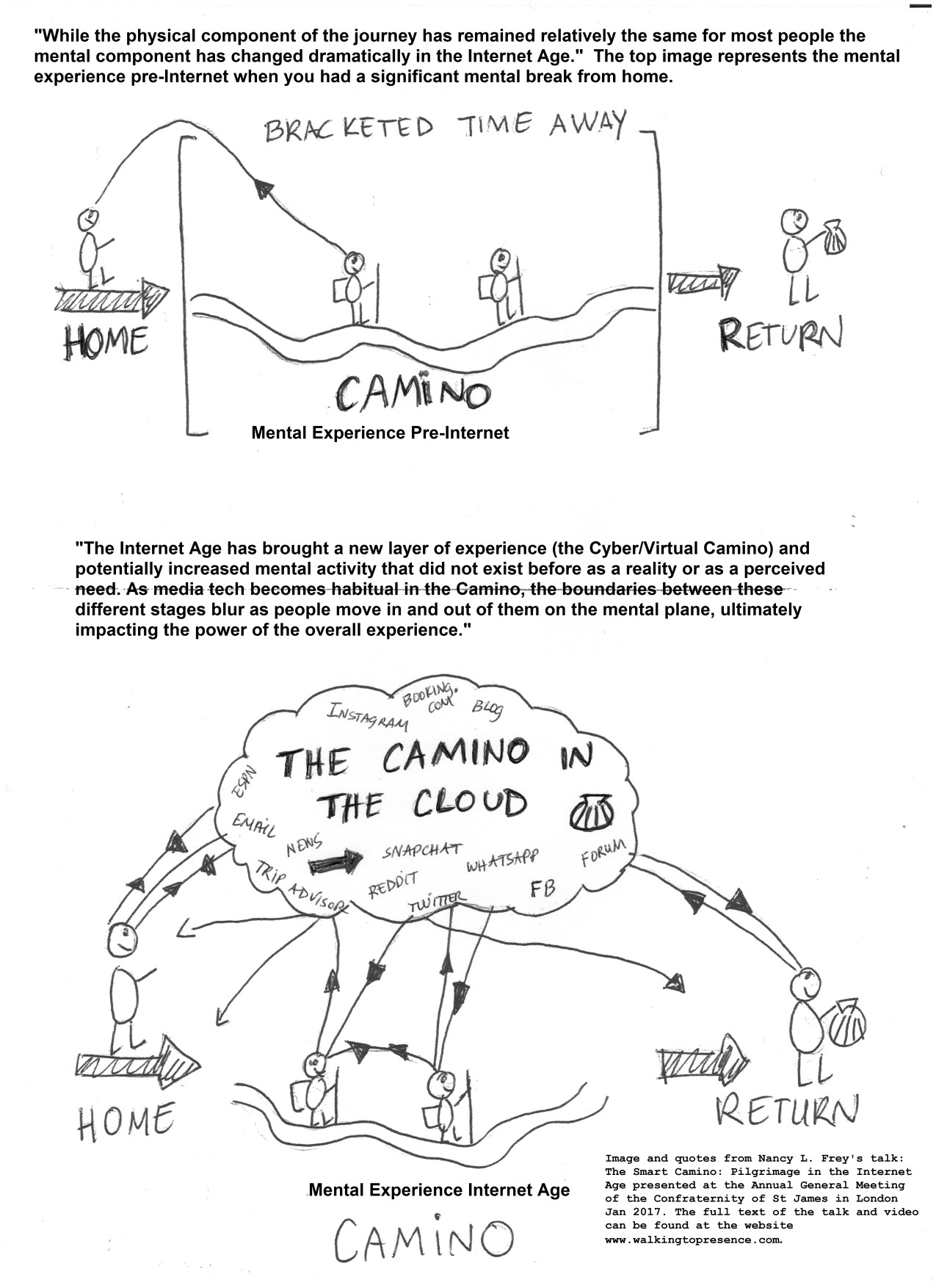 In my article on pilgrimage in the Internet Age, I describe the changes I’ve witnessed in the Camino over the last 25 years. For me the most significant change is the rise of the Internet and the development of mobile technologies that have dramatically changed the mental experience of the 21st person, in general, and the Camino de Santiago pilgrim, in particular. The Camino is an ever-changing phenomenon (and has been since its birth in the 9th C) reflecting the salient issues of larger society in each period. I have had the great fortune of living through and researching the unfolding of these changes. For the most part, people are largely unaware that their digital habits potentially have a great impact on the pilgrimage experience due to the increased mental distraction the use of digital devices typically entails. How one uses a digital device greatly affects how one engages with the Camino, with oneself, nature, home, the world and the Camino community. While 21st C pilgrims are still physically present on the Camino in body, mentally they are “off the Camino” to a degree never before seen in the history of pilgrimage.
In my article on pilgrimage in the Internet Age, I describe the changes I’ve witnessed in the Camino over the last 25 years. For me the most significant change is the rise of the Internet and the development of mobile technologies that have dramatically changed the mental experience of the 21st person, in general, and the Camino de Santiago pilgrim, in particular. The Camino is an ever-changing phenomenon (and has been since its birth in the 9th C) reflecting the salient issues of larger society in each period. I have had the great fortune of living through and researching the unfolding of these changes. For the most part, people are largely unaware that their digital habits potentially have a great impact on the pilgrimage experience due to the increased mental distraction the use of digital devices typically entails. How one uses a digital device greatly affects how one engages with the Camino, with oneself, nature, home, the world and the Camino community. While 21st C pilgrims are still physically present on the Camino in body, mentally they are “off the Camino” to a degree never before seen in the history of pilgrimage.
Here are 15 tips to help you reflect on ways to keep yourself “on the road” mentally rather than engage your mind with your mobile tech devices to the detriment of being present on the Camino. In reflecting on these tips and on how you can make choices to manage your digital devices, I hope you will be able to engage more deeply and fully with the Camino, yourself and others. Buen Camino! (***Caveat - go to end to see disclaimer about what this article is and isn't.)
Short Version. If you don’t want to read the long version, please go to the end of the article for the 15 tips in a nutshell.
1) Pre-Camino Reflection
Before starting the Camino de Santiago pilgrimage, you might want to reflect on a few questions, such as: “Why do I want to go on the Camino?” What do “Camino” and “pilgrimage” mean to me? Am I looking for a profound inner journey? Do I want to walk and share my experiences with friends and family to have a shared, open Camino? Or, do I desire to “get away from it all” with some quiet, personal time away from the worries of the world? Is this a ‘bucket-list’ experience, or a religious or spiritual journey? Maybe you don’t know. That’s okay, too. People sometimes just feel drawn to the Camino without really knowing why. Nonetheless, reflecting on why you are going, may help you to make choices regarding the use of mobile tech that will make it easier to achieve your goals.
2) Motives Evolve on the Camino
Be aware that your initial reason for going on the Camino may evolve over the course of the journey. New spaces and places, experiencing new sensations and different ideas from others, as well as facing challenges can leave their mark. Consequently, the meaning of the journey can grow and develop as you go due to the reflections you make or changes you may experience from the beginning to the end (and then in the return) of the journey. Be open to these changes and allow yourself to adapt to the circumstances. Try to let go of the need to control all aspects of the journey and take them as they come. If adversity arises (which is normal), take a deep breath and try to deal on your own.
3) Self-Monitor Tech Usage Before the Camino
Studies show that people regularly self-assess their tech usage levels very poorly and generally underestimate their real time usage, number of daily pick-ups, and checking of devices. How and when do you use your tech? In what contexts do you find yourself using your tech? Self-analyze and reflect on when and how you use your tech – habit, need, boredom, work, discomfort, to communicate, check on others, etc. If you use your tech, for example, when you’re bored at home, you’ll probably use it on the Camino when you’re bored, too. Ask yourself – why do I always keep my mind distracted? Studies also show that distracted minds typically don’t feel as fully, don’t reflect, don’t focus as well and don’t discover what’s underneath the surface. What would happen, for example, if you allowed yourself to be bored and just be in that moment without having to “do something”? What might you discover? Is our tech usage a great way to distract ourselves from ourselves? If the thought is scary, causes anger or instant rejection that means it’s probably a good idea to try and explore it.
Finally, ask yourself: Do I want to have a different relationship with mobile tech on the Camino than I do at home? Do I want to tell my boss/friends/family that I will not be taking calls, answering messages and being “on call” for what happens “back home/work”? If I do want to have a different relationship with tech on the Camino, how can I make that happen?
4) Camino Preparation
The explosion of information available on any topic in the Digital Age is astounding! While this has many positives, there are also plenty of negatives, ie, Information Overload which often confuses pilgrims and potentially increases pre-Camino anxiety. Walking the Camino is not like preparing for an Everest summit hike but many people would have you believe this to be true! One surprising observation I make in my research is how the perception of how difficult the Camino is to plan and do has increased inversely proportional with the increase in services and information available making it infinitely easier now in 2017 than it was in 1985 when the first guidebook to the Camino was published and there was no internet, very limited pilgrim accommodation and information available. In that 1985 guidebook there was one page of preparation information. By 2011 a new guidebook genre was born: how to prepare for the Camino. I ask in my 2017 article on Pilgrimage in the Internet Age: “Do you objectively need more help to do the Camino in 2016 than you did in the 1990s or have we made it more complicated than it is?”
What do I recommend in terms of preparation? Prepare but don’t over-prepare! It is important to prepare mentally and physically for the Camino but it is also essential to draw a line on the amount of preparation, especially mental preparation. The hazard today is to OVERPREPARE mentally. It’s essentially a control issue. Fear of the unknown is real, of course. Therefore, to try and diminish potential anxiety levels, preparing helps you to make the unknown a bit less unknown. The problem in the Internet Age is that you can know way too much about the unknown, so much that it takes away from your experience once you are there. DISCOVERY, SURPRISE and WONDER are an essential part of a journey and a pilgrimage is then a step into the unknown intentionally because, as a rite of passage, a pilgrimage entails some kind of personal trial, adversity, discovery, challenge to grow, and to learn and develop something new inside of oneself. Overpreparing also does not necessarily reduce anxiety and, in fact, can simply increase it!
For example, if you plan to go see a movie and before you go you watch the trailer, read reviews about the movie (often with spoilers) and comment on the movie in a forum even before you see it, how does that impact your first time viewing? Probably very significantly. It’s the same with the Camino. If you spend hundreds of hours online (as people do) looking at every corner of the Camino, connecting through groups with other people, hearing about issues on the Camino ahead of you, posting on forums, what does that do to your experience of discovering it for yourself? Take it as it comes. People have always had pre-Camino jitters. The difference between pre-Internet and now is that pre-Internet you eventually had to let go as you did not have a device that allowed you to cling. Now we have devices (mental crutches) that allow us to fret and cling and consequently we don’t choose to let go and allow ourselves to trust what might be, let experiences simply happen and discover many things about ourselves in the process.
With increased utilization and incorporation of mobile tech in daily life, there’s an increased lack of trust in the self to deal with circumstances/adversity/life situations as they may arise. Rather the trend is to prepare for every single possible thing that might “go wrong”. Simply scroll through popular threads on Camino community groups and the minutiae that people worry about gets progressively more detailed: poncho vs raincoat, toilet etiquette, 30 tips for newbies, how to make friends, pilgrim tattoos? There are just some things that you learn as you go and you don’t need to fret about it ahead of time! Everyone starts green and must learn as they go!
5) Communication with HOME: Family, Friends and Work
Before you go, discuss expectations and establish norms with friends, family and work about how to handle communication (in both directions) while you are away. Pre-Internet, home and the pilgrim accepted that contact would be limited. Separation from a loved one was rationalized by the adage: No news is good news. Nowadays, no news for a couple of hours sends some people into a panic. On the Camino our digital world allows instant connectivity between home and pilgrim in a way that never existed pre-Internet. Is this what you want? Do you want to have physical AND mental time away or do you want to be mentally at home and on the Camino simultaneously? Keeping up with family and friends through emails, photos, social media can be very time consuming and emotionally exhausting. Do you want to spend your time on the Camino that way? Also, do you want to be aware of everything going on at home (the cat in the tree, the failed math exam, the unpaid bill, etc), stuff you can do nothing about when you are physically away? Pre-Internet no one had to ask themselves these questions because home and the traveler/pilgrim had a clear break and separation that lasted for an extended period of time (except for occasional letters or phone calls in the 20th C).
Another old adage was “Distance makes the heart grow fonder.” Having real mental distance and physical time away, allows you to look at your relationships more clearly and to feel more powerfully emotions of longing and love or perhaps relief and joy at being separated. The mental and physical distance helps you get necessary perspective on your life. If you’re always mentally connected on the Camino with loved ones through texting, emails, photos, updates, etc, you make it very difficult for yourself to get the necessary mental distance to reflect on the deeper meanings of your relationships.
Would potentially limiting your communications with family be difficult? Probably, yes, but we return to the idea that some mental distance and adversity on a pilgrimage/journey is good and necessary. Pilgrimage is typically tough both mentallyand physically. It’s a powerful rite of passage where the self is often tested. Mobile tech allows us to reduce the mental trials inherent in rites of passage that have characterized the human experience since time immemorial. There is nothing wrong with feeling lonely, bored, sad and/or doubtful AND it is a completely normal part of the process! Many people find themselves emotional, confused or crying on the Camino and they don’t know why. That’s okay. It is a typical part of a pilgrimage process (rite of passage) when you are outside of your comfort zone, away from your normal life and are in the process of challenging cherished held ideas, or pushing yourself in new ways or questioning who you are and what you are doing on the Road. When you give yourself a chance to feel these things and reflect on why it can become a great opportunity and a growing process of the self. Being tightly and safely connected to your mobile device will keep you away from the opportunity of having these remarkable, tough and profound human experiences in such an incredibly, safe and fabulous place that is the Camino de Santiago.
6) Desire to be Tech Connected Can Evolve
Typically, pre-Camino anxiety, the fear of being ‘out of touch’ as well as the excitement of sharing the journey with friends and family, keeps people tech connected early on in the Camino. When people start walking and experience the joy of being in nature and a community of open pilgrims, one’s sense of time and place changes. There is a growing sense of enjoyment and fulfillment in being in the now, with your thoughts, with yourself, with others around you, in nature and the need/desire to connect to the Internet often diminishes.
Be prepared for the possibility that you will feel less desire to connect to the outside world and trust that natural response which urges you to connect to the present simply be where you are. Writing to friends and family (or your public blog, etc) on a daily basis may come to seem like a chore as it can be very time consuming. Trust that feeling and allow yourself to be on the Camino and not tied to your device and the mental connectivity and distraction of things going on someplace else.
If you are concerned about family members, warn them ahead of time that your communication frequency may vary as you go or agree to send out a group “I’m okay” message from time to time.
7) What Relationship with Tech Do I Want on the Camino?
Everyone needs to make their own choices regarding tech usage on the Camino, just try to make sure they are conscious choices. Everyone’s circumstances are different. Consider making some tech usage rules for yourself pre-Camino. Suggestion #2 encourages you to self-assess your usage patterns at home. Do you want to maintain the same mental relationship with the internet that you have at home on the Camino? If you don’t, then think about this ahead of time. Free WiFi is more and more available on the Camino and it will be progressively easier and easier to connect 24/7. Do you want to be available 24/7 when you are on your pilgrimage? Would you like to use the Camino as an opportunity to limit your connectivity to certain types of social media such as Facebook, Reddit or Instagram or the like?
Other ways that people manage tech on the Camino is to establish norms for themselves. For example,
- “Go dark” during the Camino. Inform people that you will be disconnected and not responding during x amount of time
- Establish a “switch-off zone” where you turn off your phone while walking or other segments of the day.
- Turn off certain features of your phone while on the Camino – notifications, certain apps, incoming calls, etc.
- Before bed or early morning limit yourself to a check-in message with family/friends
Typically people have no personal tech rules and every single time they take a photo or stop at a bar or café en route they take out their phone and check whatever. Others use their devices for entertainment (music, books, movies, etc) at the end of the day. Some people connect to on-line dating sites, sports groups, world news and stock reports and there seems to be little distinction between being on and off the Camino. Remember, pinging notifications stimulate dopamine loops in our brains. As psychologist Susan Weinschenk suggests in her article on addiction to texts, twitter and google, "Turn off the cues — One of the most important things you can do to prevent or stop a dopamine loop, and be more productive is to turn off the cues. Adjust the settings on your cell phone and on your laptop, desktop or tablet so that you don't receive the automatic notifications. Automatic notifications are touted as wonderful features of hardware, software, and apps. But they are actually causing you to be like a rat in a cage. If you want to get work done you need to turn off as many auditory and visual cues as possible. It's the best way to prevent and break the dopamine loops."
The more connected you are mentally to the world via the Internet on the Camino the less you are in the Camino living, breathing and experiencing it fully in body and mind. You are depriving yourself of the opportunity of receiving one of the Camino’s most precious gifts: freed up mental space. When people have this opportunity of freed mental space, 21st C pilgrims typically try to instantly fill it with noise from the net, home or the world. Why do we discard so readily what the Camino offers? Many people want a “time out”. Why not give yourself one?
You might ask: Why would someone want freed up mental space? If you want me to answer that question, let me know.
8) Physical/Bodily Reaction to Disconnection
If you decide to limit your tech connectivity on the Camino, be prepared for the possibility of withdrawal symptoms. A well-known, documented phenomenon among habitual mobile tech users is called “phantom ringing” or “phantom vibration” which occurs when a habitual user stops using their devices for a period of time and will hear or feel the phone even if it is turned off. I interviewed a Swedish woman who decided to do a “digital detox” (ie, sustained non-use of one's mobile tech devices) on the Camino leaving behind her phone. She experienced this phantom ringing phenomenon and told me it took her at least 10 days for her to feel that her over-stimulated mind start to calm down and that she could enjoy the Camino more fully. It is normal to have tech withdrawal symptoms or anxiety for habitual tech mobile users when they stop using them. Once you get past that stage you will feel more alert mentally, begin to perceive more with all of your senses, focus better, decrease your inner need to connect to the web and feel the present more strongly. You will feel more alive and engaged with your body, surroundings and others and less inclined to look to your phone for solutions.
9) Self-Monitoring on the Camino is another Mental Distraction
The tech industry has developed a whole series of wonderful apps that allow us to self-monitor all of our bodily functions – steps walked, heart rate, water consumption, distance covered, speed, hours slept, night movement, and so on and so on. These apps are very interesting and can serve an important function but in the context of the pilgrimage, I would encourage you to ask yourself, “Is it really necessary to monitor my body in this way?” It ends up being distracting and another example of too much information and another "thing to do". Rather than free us up, the tech finds ways to tie us down mentally by giving little rewards (ie, achievements such as 10,000 steps completed!) which trigger dopamine hits in our brain making us feel good. By focusing on the minutiae of our body, it can lead to greater stress, something to be worried about or distract you. Maybe it would be nice to give your mind a break! One of the gifts of the Camino is learning to listen to your body and knowing when you are hungry - to eat, when you are tired - to stop and rest, when your feet have pain - to stop and tend to them. When we ask these monitoring devices to listen for us, we diminish our ability to hear our body’s signs and listen to them ourselves. We end up giving these devices a tremendous amount of power over us as we begin to trust them more than our own instincts. Remember that these tech products are designed intentionally to be addictive and to erode your confidence in yourself so that you will consume more of them.
10) Using Camino Apps vs Guidebooks
People often claim that using a Camino app is the same as using a guidebook. Or, that writing in a diary by hand is the same as writing an online blog. On the surface they may appear similar but they are very different how they affect you mentally. In both cases, the guidebook and the handwritten diary, anchor you to the present and help keep you in a bracketed period away without external influences and feedback. Reading about the next day’s stage in a guidebook has a limited frame of reference and consumption of time. The tendency when reading a stage on an app is to spend a significantly greater amount of time due to the many distracting elements which encourage you to seek further information about many different aspects of the journey – lodging, where to eat, comments someone made about this or that, what to do or not to do. Before you know it, you have been sucked into a series of articles or posts and spent much more time than if you had simply had the fixed, sufficient info offered in the guidebook.
In terms of a diary vs a blog, a diary is private, of the moment and may or may not be shared with anyone in the future – usually not. Writing a blog almost always implies an audience which can be very small (family and a couple friends) to a very large, unknown audience. The tendency when writing for an audience is to create a version of events for that audience. Depending on how the blog is set-up, the pilgrim may or may not receive instant feedback.
Whatever you choose, be aware of the hazards that an app or a blog will have on increasing your mind’s distraction, time spent on line and less time spent physically and mentally where you are.
11) The 21st C Pilgrim Ritual: Post-Walk Tech Time
Habitual mobile tech usage has created new needs and new neediness in 21st C pilgrims. One of these new needs is the daily internet fix, ie, “tech time.” Tech time consists of a window, usually after checking in for the night and doing a few basic chores, to settling down for a period of time to do a series of internet activities that may include: checking and answering messages, catching up with the world, processing and sending photos, blog writing, social media posts and updates, planning the next day, entertaining oneself, etc, ie, disconnecting mentally from your immediate reality and sharing in some way the day’s events via the internet with a larger audience. People often sit in common rooms, where the band width of the WiFi is best, and connect to their devices and disconnect or tune out of the world around them.
Due to the rise of the Internet, a new concept of “being away” and “doing the Camino” has evolved in the 21st C Camino experience: the Camino is when I walk and then I have “free time” to do other stuff. Before the Internet Age, the Camino existed outside of “normal time” and was a complete, bracketed experience of time away in a very different space and place. Our devices now allow us to rupture constantly our sense of being away in a new place, space and time. It’s much harder to listen and flow into the cyclical sense of the Camino and perceive the “out of time” feeling that once was normal. The current trend is to constantly break up the day into mental engagement and disengagement rather than give oneself a long, extended period of mental disengagement over days and weeks. Rather than a mentally freeing space, the Camino potentially becomes a very busy place mentally where people feel stressed about all the “stuff” they need to do during their “tech time” to keep up, the family informed, and the audience happy. People also start to complain about the poor WiFi that doesn’t allow them do what they want so they can have more free time on the Camino. For some, this adds a layer of stress never before witnessed in pilgrimage as an experience! 21st C pilgrims choose to keep themselves busy, distracted and mentally burdened to a much greater degree than ever before. Why?
What did people do before Tech Time existed? What would you do with “freed up mental space?” “Tech time” replaces what pre-Internet was valuable downtime, socializing time, exploring time, rest time, reflection time. 21st C tech pilgrims need to be doing something all the time because that keeps the mind busy and engaged. What did you used to do? You hung out. You walked out the albergue/refuge and maybe interacted with a local or people-watched in the park. You observed. You got bored. You played cards, read a book, wrote in a diary, sketched a drawing, longed for something, thought of a loved one, thought of another pilgrim, reflected on the day, walked around the village, wandered over to the church, ran into someone you hadn’t seen in a few days as you wandered, wondered if you would make it or what you were doing there, made a communal dinner, shopped in town, made some stupid mistake and felt embarrassed about it. Since you were often feeling lots of different things on the Camino, you may even have felt more sexual and decided to go talk to someone you thought attractive. You looked up at the sky. You sang, wrote letters, sent postcards, and learned some new phrases in another language. There was no way out of the moment. You lived and you learned. Now we insulate ourselves from experiencing what is around us in favor of what is out there in the CLOUD as if that were more important than what we have in the present.
As Master Oogway says in the Disney movie Kung Fu Panda:
“There is a saying: yesterday is history, tomorrow is a mystery, but today is a gift. That is why it is called the "present.”
Extended Tech Time takes us away from the present that is the Camino as a whole and we lose the possibility of living it fully. Try keeping your head out of the Cloud!
12) Other Pilgrims’ Tech Usage
A great part of the Camino pilgrimage experience is the Camino community and developing a feeling of belonging. On the Camino you will encounter many different tech mobile usage patterns among pilgrims that mirror what you will find in daily life. You may be eating at a table with other pilgrims who will multi-task your conversation by using their phone while chatting with you. Or, you may encounter people who entertain themselves before going to bed with iPads, reading with bright lights and the pinging of notifications coming in. You may find yourself alone during “tech time” if you don’t connect with your device. If you choose to go less tech connected than others, you may end up feeling more isolated from some of your companions. These can be opportunities for reflection, conversation, or compromise. It is now part of the 21st C journey and reality. Reflect on how your actions, and those of others using their tech, potentially impact the community.
13) Trip Advisor Camino
The tendency in the Internet Age is to try and do everything “right” and have the perfect Camino with no glitches, no worries and no problems. There is no perfect Camino. Whatever you do, is your Camino. People frequently ask is it “cheating” if I do this or that. There is no official Camino “rule book. “ There are a lot of unstated, and often conflicting, norms among pilgrims that is part of the “Camino culture” of the late 20th C and early 21st C experience. The seeming ease to have the “real”, “authentic” or “right” Camino is heightened in the Internet Age with the rapid transmission of constantly updated information by an infinite number of experts. Platforms, such as TripAdvisor, are used by pilgrims to rate albergues, monuments and experiences that generate opinion on what is the “best” among pilgrims. We bubble wrap our experiences by always following the Trip Advisor recommendations to make sure “nothing goes wrong”. Pilgrims often read and trust these recommendations on line rather than simply explore on their own. By following all of the “recommendations” to have the “perfect Camino”, you limit your choices, your own criteria and miss opportunities to experience something for yourself. You let other people choose for you and, in the process, lose the diversity of the experience. The problem is if you don’t check stuff out yourself from time to time, you limit your opportunities to learn or grow and you decrease your face-to-face encounters. There’s nothing wrong with things “going wrong” from time to time – it converts your travel experience into a journey, into an adventure and these “bad experiences” often make the best stories in retrospect.
14) Try to deal first on your own before turning instantly to your tech to resolve a moment of adversity.
Reflect on how and when you use your tech on the Camino. As people become more and more dependent on their mobile devices, when adversity arises, the trend is to more and more quickly turn to the mobile device for the solution rather than try to work it out for oneself. People believe they are more independent but, mentally, they actually become more fragile and dependent on their devices to resolves situations when the “going gets tough”. What do I mean by the going getting tough on the Camino? I dedicated a chapter in my 1998 book Pilgrim Stories to the “Landscapes of Discovery” in which I describe how the obstacles that people overcome typically become pathways to growth, confidence and self-empowerment. One common “trial” that people face is “getting lost”. Someone will be walking along, lost in their thoughts and then realize that they don’t see any more yellow arrows marking the way. In the Internet Age it is easy to simply take out your phone, connect the map/gps function and follow its directions back to the Camino. Of course there is nothing “wrong” with doing that. What I am suggesting is that you try to first figure out where you went wrong, ask someone who might help and/or work it out for yourself. We atrophy these “dealing” skills when we delegate them entirely to our devices. The number of moving stories I have of people feeling lost and then “found” by another pilgrim, a villager or circumstances is large. These became part of the pilgrim’s journey - lessons in humility, trust or fortitude. Self-reliance is a wonderful skill to develop and sharpen in the safe space that is the Camino. When we lose that self-reliance, we look to our phone and then others to get us out of a tough situation because we don’t realize that often we, ourselves, have the power to resolve our own problems. People end up abusing expensive emergency services because they instantly panic and expect that someone else will resolve their problem for them.
15) Memory and Sharing. You don’t have to remember and share everything!
In our world of instant share and constant photos, people express concern that they won’t remember if they don’t record everything. Recording, photographing and sharing becomes another layer of work and stress on the Camino. Remember, it is okay not to remember everything that happens or to share everything. When we parcel out experiences through constant sharing as they happen, they potentially lose their deeper power in our total experience. It’s okay to keep things for yourself.
Pre-internet most people did not have cameras on the Camino. If you did have a camera, the photos were never available until after you returned home. Experiences became internalized, mulled over, reflected upon over the course of the whole journey, of the entire bracketed period away. In the Internet Age, the tendency is to capture moments and selfies showing ourselves and others that “we were there”. Somehow if it’s not recorded and shared, it’s not real. Digital culture also imposes a sense of an obligation and pressure on the traveler/pilgrim to record and share as much as possible.
I have observed repeatedly with some 21st C tech pilgrims the: “I came, I took the photo, I left” phenomenon where a pilgrim arrives at a monument that he/she has probably heard is worth seeing, gets out the phone, takes two or three pictures and then moves on without pausing to observe, go inside, read about it, etc. Been there, done that. What’s the point of taking a multitude of random photos, many of which you will probably never look at again? It becomes an album of Camino selfies, smiles and places but not a Camino of experiences lived, observed and felt in those places. As a result you get surface but little depth.

------------------------------------------------------------------------------------
The Camino de Santiago pilgrimage offers the ideal environment to disconnect from the worries of the world and to connect to a generous community of fellow travelers. The opportunity to take time out and enjoy the simple gifts that the Camino offers, including freedom from mental distraction, at least for a limited amount of time, is precious. It’s up to each person to choose whether or not they want to experience that gift or not. Remember, try to look up more often than look down. Buen Camino!
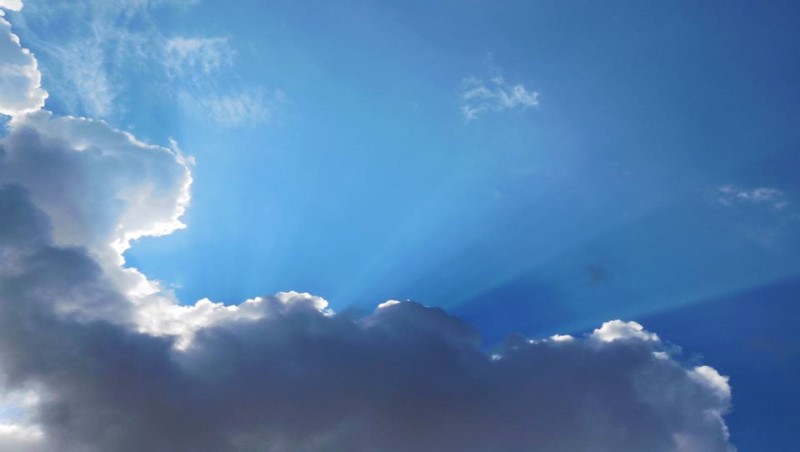
SHORT VERSION. The 15 Tips in a Nutshell:
1) Reflect before going. Why am I doing this? What is the Camino? What is pilgrimage?
2) Be cognizant of the fact that motives often evolve. Be open to change.
3) Self-monitor your tech usage before going and ask yourself if you want your usage to be the same on the Camino at home/work life.
4) Prepare mentally and physically for the Camino but watch out for Information Overload. Draw a line and resist over-preparing. More information is not necessarily better.
5) Talk before going with family, friends and work about communication expectations on both sides. Do you want real mental distance or do you want to be always intermittently connected?
6) Like motives, your desire to be tech connected often evolves on the Camino.
7) There are many ways to be more or less tech connected on the Camino. Reflect ahead of time about how you might want to manage your connectivity.
8) Sustained disconnection from your mobile tech in habitual users can cause withdrawal symptoms. Be aware of this phenomenon.
9) Question gadgets and apps that encourage mental distraction such as “self-monitoring devices”. Ask yourself, do I really need these on my pilgrimage?
10) Consider using a guidebook vs an app. A guidebook anchors you to the moment, an app (usually) encourages your mind to flit around endlessly.
11) A new phenomenon of the 21st C pilgrimage is post-walk “tech time”. Reflect on how engaging in this practice undermines your bracketed time away, quickly fills up your freed up mental space and ends up distracting you from being where you are – on the Camino.
12) A great part of the Camino pilgrimage experience is the community and a feeling of belonging. How other people manage their tech also impacts greatly the on-the-ground pilgrim community. Reflect on how your actions and those of others using their tech potentially impact the community.
13) TripAdvisor can be a great tool but in the case of the Camino allows you to bubble wrap your experiences without taking any risks, trusting instincts, exploring on your own, making mistakes – all the stuff that turns a trip into a journey. There is no perfect Camino except your own.
14) When something “goes wrong” try to figure it out first before instantly turning to your phone for the answer. Self-reliance is a fabulous skill to develop and sharpen on the Camino.
15) You don’t have to remember or share everything! Trust being in the moment, rather than always capturing the moment. Savor special sights and moments for yourself from time to time.
*** CAVEAT: This article is not “anti-tech” nor a nostalgic look to the past. I am very aware that our tech industry-driven society now requires us to have mobile phones for many tasks and there are many features that are very convenient and useful. I am not saying that “tech is bad!” I am suggesting that you probably need a lot less tech in your pilgrimage experience than you might imagine! In fact, engaging less with your tech will give you more real life, face-to-face human experience! Also, I am not judging people who use technology or saying that using tech on the Camino will ruin your experience or that having a phone or checking with your family is “wrong”. I am speaking from 25 years’ of experience on the Camino doing anthropological research both before the Internet existed on the Camino and now that it is in full-swing. It is possible to see very clearly how tech usage impacts your mental experience on the Camino and there is a huge difference between these two periods. My point is to help you make real choices. Of course, tech offers many wonderful things to make our journeys easier and are very efficient for all sorts of tasks but that’s not necessarily the stuff a pilgrimage is made of.
Furthermore, I am not talking about have a more REAL OR AUTHENTIC experience. Each person needs to find and create their own authenticity and there is no magic formula that will do this. What I am trying to do is to help people engage more profoundly with the Camino, to get below the surface and discover themselves more intimately. I am not saying this is the right way, the authentic way or the best way.

